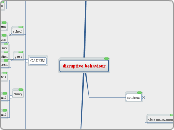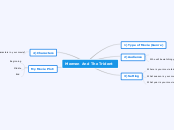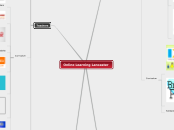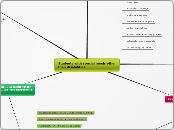Copyright for Teachers
How can teachers stay updated on Fair Use and copyright laws?
Resources to stay up-to-date:
A database of online resources including news articles, organizations, blogs, books, podcasts, videos, court cases, and current informational websites can be found at:
http://www.teachingcopyright.org/resources
As a teacher, you can stay updated on Fair Use and Copyright laws in many different ways. There are organizations to research, like Creative Commons, that specialize in copyright information. Numerous online blogs about copyrighting are public. The U.S. Government posts amendments and new information on their website as it becomes available. Many schools and universities even have their own centers devoted to copyright laws! Combining digital sources/networking and professional networking within your school, district, city, or state allows you to stay updated on laws.
What is Creative Commons?
This information + more be found at the Creative Commons website:
http://creativecommons.org/about/
Their Mission:
"Creative Commons develops, supports, and stewards legal and technical infrastructure that maximizes digital creativity, sharing, and innovation."
Creative Commons is a nonprofit organization that allows anybody, from individual creators to large companies, to keep their copyright while allowing others certain use of their work through their own set of copyright licenses and tools. It enables a person or company to protect their work while still sharing it. The creator has complete control over how much of their work they want to share. It is a different take on copyright outside of the Standard Copyright Law idea of "all rights reserved".
What is Standard Copyright?
This information and more FAQ about Standard Copyright can be found at the following links:
http://www.copyright.gov/
http://www.teachingcopyright.org/handout/copyright-faq
Standard Copyright Law is a form of legal protection where the copyright is given to the author of the work, unless there is a written agreement in which the author assigns the copyright to another person or company. This is the copyright that is linked to the phrase "all rights reserved". The creator has exclusive control of the work for a limited period of time and holds all rights to decisions about the work, including: distributing, reproducing, displaying, performing, or creating new works based on the work.
How are Fair Use, Creative Commons, and Standard Copyright alike and different?
Differences
Standard Copyright is a strict view on copyright, and is a law put in place by the government. Fair Use is a limitation based on Standard Copyright, to protect our First Amendment right to freedom of expression. Creative Commons is an alternative in addition to the Standard Copyright Law. It is one of numerous organazations that allows creators to establish their own rules about sharing their materials.
Similarities
All three deal with copyright laws. They all establish rules and boundaries in which people can use others materials. They provide structured ways that people can protect or share their own creations.
Why is Fair Use important for teachers?
Fair Use is important for teachers to know so they understand their rights and limits to full and fair use of copyrighted material for educational purposes. A teacher must know what materials they can and cannot legally use in their classroom.
These examples + more information on how to implement Fair Use in your classroom correctly can be accessed at:
http://home.earthlink.net/~cnew/research.htm
Examples of a teacher illegally using materials for educational purposes:
Using multiple copies to avoid purchasing a textbook or literature.
Using multiple copies to create an anthology.
Examples of a teacher implementing fair use of copyrighted materials for educational purposes:
Using a single copy of a chapter of a book for research, teaching, or class prep.
Using multiple copies-one copy per student-if the material is adequately brief, spontaneously copied, and in compliance with cumulative effect test.
What is Fair Use?
This information + more info about Fair Use can be found at:
http://www.teachingcopyright.org/handout/fair-use-faq
Fair Use is a limitation set on the Standard Copyright Law. Fair Use allows people besides the copyright owner to copy part, or sometimes all, of a copyrighted work, even if they don't have the owner's permission. It helps reduce the tension caused by the 1st Amendment's freedom of expression vs. Standard Copyright Law. There are 4 factors that courts use to determine fair use.
The four basic criteria courts use to determine fair use:
1. The purpose and character of the use of copyrighted works
2. The nature of the copyrighted work
3. The amount and substantiality of the portion used in relation to the copyrighted work as a whole
4. The effect of the use upon the potential market for or value of the copyrighted work
Examples of cases found to be Fair Use:
criticism, commentary, news reporting, art, scholarships, research, and search engines.
Keep in Mind:
Fair Use is decided by courts on a case-to-case basis using these 4 factors from Section 107 of the Copyright Act. All four factors must be met to constitute fair use. These factors are guidelines and do not always guarantee legality.









